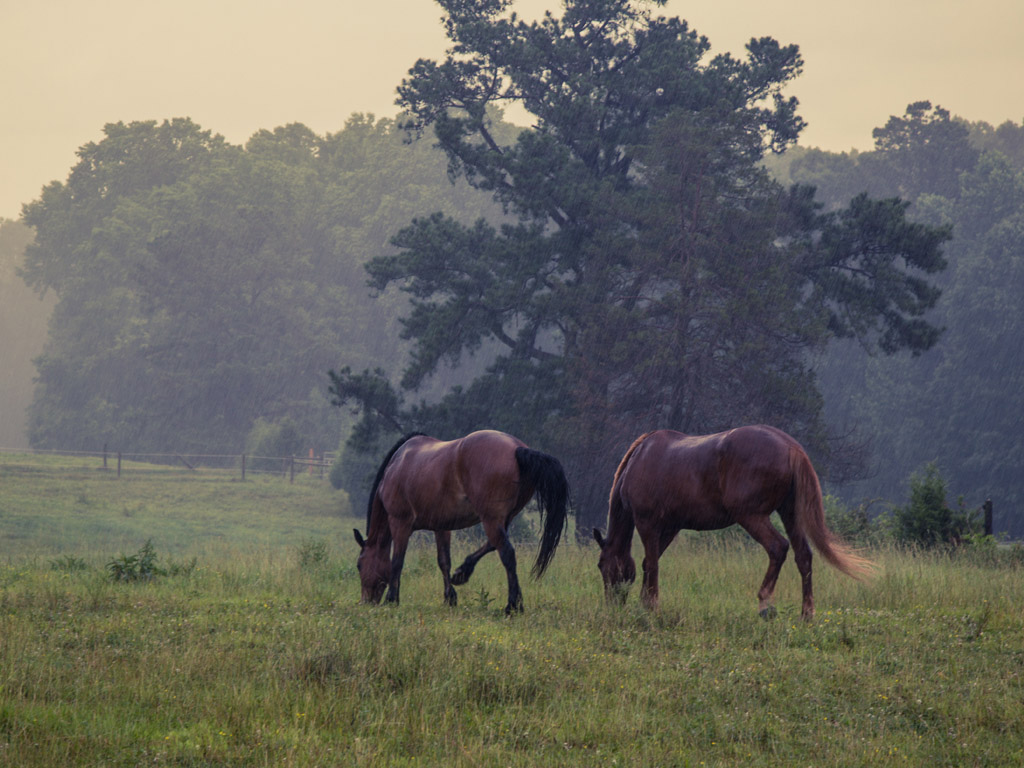It’s that time of year when the heat starts to rise as well as the humidity, and of course the showers and pop up rain storms Florida is known for.
The arrival of summer means changes in the management of our horses. For most people, getting your horse in before the rain comes is not possible. The reality is that our horses are going to get wet sometimes. Add to that, the fact that a good roll when wet is a priority for most horses, you have now created the perfect environment for Rain Rot to set in.
Rain rot is a bacterial infection caused mainly by Dermatophilus congolensis. It is also known commonly as rain scald, mud poisoning, or if only on lower limbs, dew poisoning. These bacteria live in the soil and are commonly observed during prolonged periods of wetness. The other factor that allows these bacteria to thrive is the anaerobic environment (absence of oxygen). So when you horse is wet and dirty for long periods of time it increases the chance of Rain Rot.
Infected horses generally will have a series of small bumps along their backs, rumps, neck and legs. These lesions will progress to circular raised scabs or tufts of hair. Rain rot is contagious, generally transmitted by shared horse tack (such as blankets or brushes) or mutual rubbing posts such as a fence. The lesions do not cause pain to the horses unless left untreated and a secondary skin infection results.
Treatment centers on a few key management changes. First, is the removal of the matted tufts of hair and scabs. This can be is painful and result in raw, bleeding areas. The bacteria do not survive once exposed to oxygen so removal of the scabs is the best treatment. I recommend that you bath the horse with an antimicrobial shampoo (betadine or chlorohexidine shampoo) and soften the scabs before removal. A good curry during the bath will remove the majority of the scabs and excess hair. Don’t be concerned if you were unable to remove them all at one time, just bathe every other day until gone. Second, disinfect your brushes as well so not to re-infect your horse when you are grooming them. Wash them in the same shampoo and airdry them. If your horse is still wearing a blanket, wash it as well and dry in the sun. Wipe down your tack after every ride with a towel to remove excess dirt and hair. Third, affected animals should be kept dry and clean as possible. Limit turn out if there is a chance they will get wet. A little extra elbow grease (grooming) to remove the excess hair in between bathing will help reduce the spread, get oxygen to the skin’s surface, and make your horse more elegant. Severe cases may require treatment with antibiotics for a week or two.
Just remember Warm sun and dry weather is nature’s best cure for rain rot.

